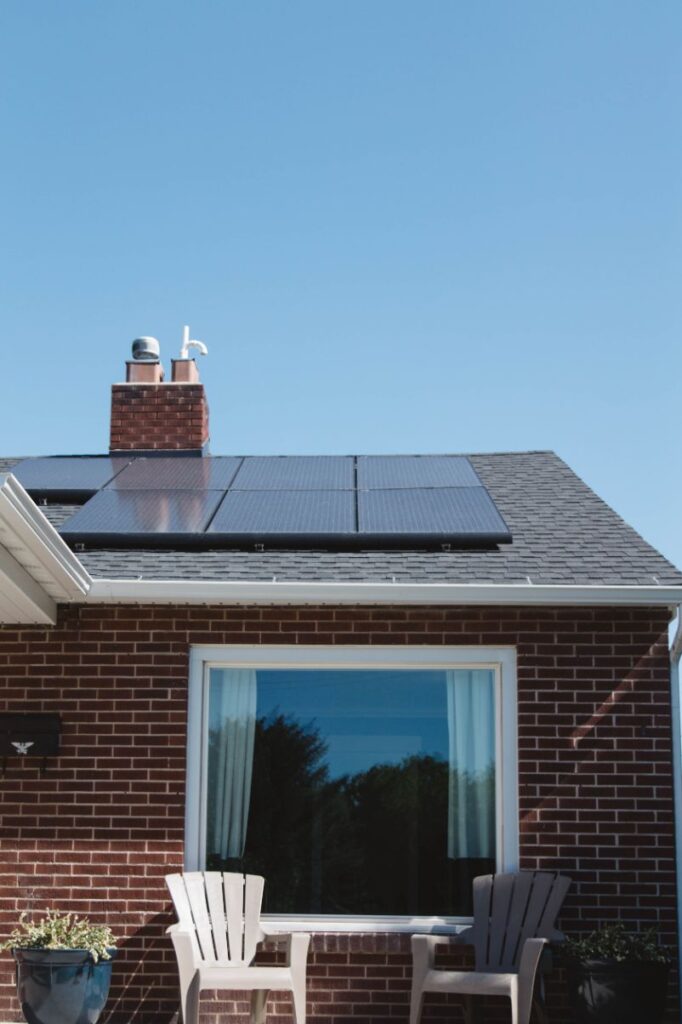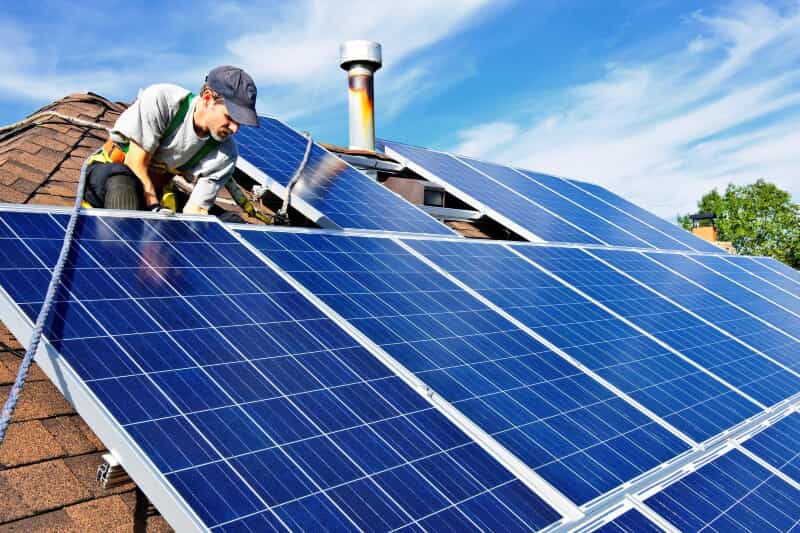The process of getting a new roof for your house is already a big undertaking; adding any more challenges or steps only makes it more complicated. However, there are at least additional two steps required for your roof replacement if it has solar panels.
Although it’s typically advised to replace your roof before installing solar panels, sometimes you just can’t help the sequence of events. Still unsure of how solar panels can be used to replace a roof? We have some advice to help you on your roof and solar journey. Please read this article thoroughly.
Benefits Of Installing Solar Panels When Replacing Your Roof
If you get a new roof and solar at the same time, you will enjoy eight essential advantages:
Single Point Of Contact
This is frequently the most significant benefit for homeowners when replacing the roof and adding solar panels. You can combine efforts and choose one company to handle everything on your behalf rather than having to coordinate the work for two sizable projects among numerous businesses and government representatives.
You will receive streamlined communication that aids in the progress of the work if you discuss the specifics of both a new roof and the installation of solar panels with just one person.
Combined Financing
The replacement of your roof and the installation of a solar power system can be expensive endeavors that call for extensive financial planning. Instead of pursuing multiple options from various vendors and banks, finishing both projects through one company gives you the chance to pay for everything with a single loan.
Combined Permitting
The permitting procedure is streamlined by using a single point-of-contact to handle all the details on your behalf, much like combined financing. By using this strategy, you can hand off one of these projects’ most stressful elements to a professional who is skilled at navigating red tape and keeping your project on track.
Simplified Timeline
Making coherent plans for what happens first and which steps come next is simpler when you approach the installation of solar panels and roof replacement as a single project. Knowing the specifics of the work will enable you and the others doing it to complete it more quickly.
Increased Roof Durability
Every roof will eventually wear out, though the length of time it lasts largely depends on the material it is made of. Solar panels have a longer lifespan than the majority of roofing materials; they frequently last for more than 25 years. Going solar soon after replacing your roof is a smart choice because the new roof with solar panels will last longer due to the coverage provided by the panels.
Reduced Long-term Costs

There will be a much lower likelihood of needing to re-roof during the lifespan of the solar power system if new solar panels are installed in conjunction with new roofing. Therefore, if you choose to go solar without first replacing an old roof, you can avoid the expensive and time-consuming process of removing your solar panels, replacing your old roof, and then reinstalling the system.
Roof Compatibility
Not all roofing styles and materials can accommodate the solar installation. When solar panel installation and roof replacement are done simultaneously, it is guaranteed that compatible roofing materials, suitable shingling, and the appropriate tilt will be applied.
For instance, installing solar on roofing made of incompatible materials or with more than one layer of shingles increases the risk of water damage. You will need to install additional materials to achieve the ideal tilt if the angle of your roof is outside of a certain range.
Improved Home Value
Your home’s curb appeal may be enhanced if you replace your roof and install solar panels. Actually, according to Remodeling Magazine, a brand-new roof can raise your home’s resale value by over $17k on average across the country. Financially, it just makes sense!
How Can A Solar Roof Be Replaced?
You’ll Have To Remove Your Solar Panels To Replace Your Roof
It cannot be avoided: in order to replace your roof, your solar panels must be removed. As a result, you won’t have access to your renewable energy sources while having your roof replaced, and for a few days, your house will only be powered by the utility grid.
Be ready for a higher-than-normal utility bill because that will increase costs. Be ready for outages as your power will probably be interrupted for at least a few minutes at a time during the removal and installation of your panel.
Another thing you should be aware of is that your solar panels won’t be taken down by your roofers. You should call your installers to have them take down your panels before your removal project starts because roofers typically lack the training or expertise to handle solar panel removal properly.
It will probably take at least a day to temporarily remove your panels, and a similar amount of time to install them again. To account for your panel removal and installation, schedule a few extra days for your replacement project.
You may be interested in Will Solar Panels Work On An East-facing Roof.
Be Careful When Choosing Your New Roof Material
You might be tempted to use a different roof material when replacing your roof. Not all roof materials use the same solar mounting brackets, whether it’s because some are more energy-efficient, more resilient, or more reasonably priced.
Your project’s overall cost could increase by thousands of dollars if you switch materials and have to buy new mounting hardware. If your new roofing material can utilize your current mounting hardware, ask your solar installers in advance. If so, make arrangements to have your new mounting hardware delivered before your roof replacement is complete.
In this way, you won’t have to wait around for a new delivery before having your solar energy system installed again.
You can check out more information we have on Can You Put Solar Panels On A Patio Roof or On A Metal Roof?
Choose Solar Installers And Roofers Who Will Work Together
You may not be able to directly connect your solar installers and roofers, but since both of them are directly affecting your house and your roof, you’ll probably need to act as a mediator between the two.

Remember: you are in control over your project, and you should be able to say what gets done, how it gets done, and when. By selecting a roofer who is willing to cooperate directly with your solar installation company, you can make the process of replacing your roof much simpler.
A quicker and less stressful project will result from providing your solar installers with your roofing company’s contact information and allowing the two providers to work together on your project.
Avoid Extra Costs By Replacing Your Roof Before Installing Solar Panels
Do you intend to switch to solar power? In order to assess the general condition and quality of your roof before beginning your project, many solar installers will in fact inquire as to whether you’ve recently had it inspected. Simple: Your solar installer will likely advise you to replace your roof before installing solar if your roof has less than five years of useful life left.
Even temporarily removing your solar panels can be expensive; therefore, by replacing your roof beforehand, you could end up saving thousands of dollars over the cost of simply installing your panels now and replacing your roof later.
Reasons Why You Might Need A New Roof
The National Renewable Energy Laboratory (NREL) estimates that more than 2.8 million homes require a new roof each year. Thus, while a roof can typically be expected to serve you for 20 years or more, the following signs are indicators that yours needs replacing:
- Broken or Loose Tiles/Shingles: These problems are typically visible with the unaided eye, so look out for damaged or missing objects.
- Worn-Out Materials: Your roof will eventually deteriorate due to aging, just like anything else. After many years, problems like cracked tiles, rusting, shingle granules, and bare shingles might become apparent.
- Water Damage: Any damaged roof part can allow water into your house, especially during rainstorms. Check your roof for issues like broken tiles, worn-out sealants, torn underlayment, and similar issues.
- Cracks and Punctures: The most common reason for tiles and underlayment to become cracked or punctured is trauma. This can include things like tree branches that fall on your roof, shoddy construction, and human weight.
- Stagnant Water: Your roof’s gutters and flashing may not effectively drain water if they are damaged.
- Structural Damage: Damage to your home’s structure as a result of neglected roofing issues could put your life and the lives of your loved ones in danger.
The process of removing and reinstalling solar panels is complicated and expensive, so it’s better to get the roof work done before you add solar panels on top. For this reason, you might need a new roof before you can go solar. Additionally, if your roof is nearing the end of its expected lifespan, it might not be structurally sound enough to support the additional weight of the solar equipment, which could endanger the installation crew and your house afterward.
Conclusions
Making wise choices and preparations can help you save money and prevent unneeded hassles when it comes to going solar or replacing the roof of your home. As was previously mentioned, it is best to replace your roof before switching to solar. So, you won’t need to set up your solar panels, take them down, and then put them back up again. Time can be saved and costs can be reduced by having a roofing inspection.
